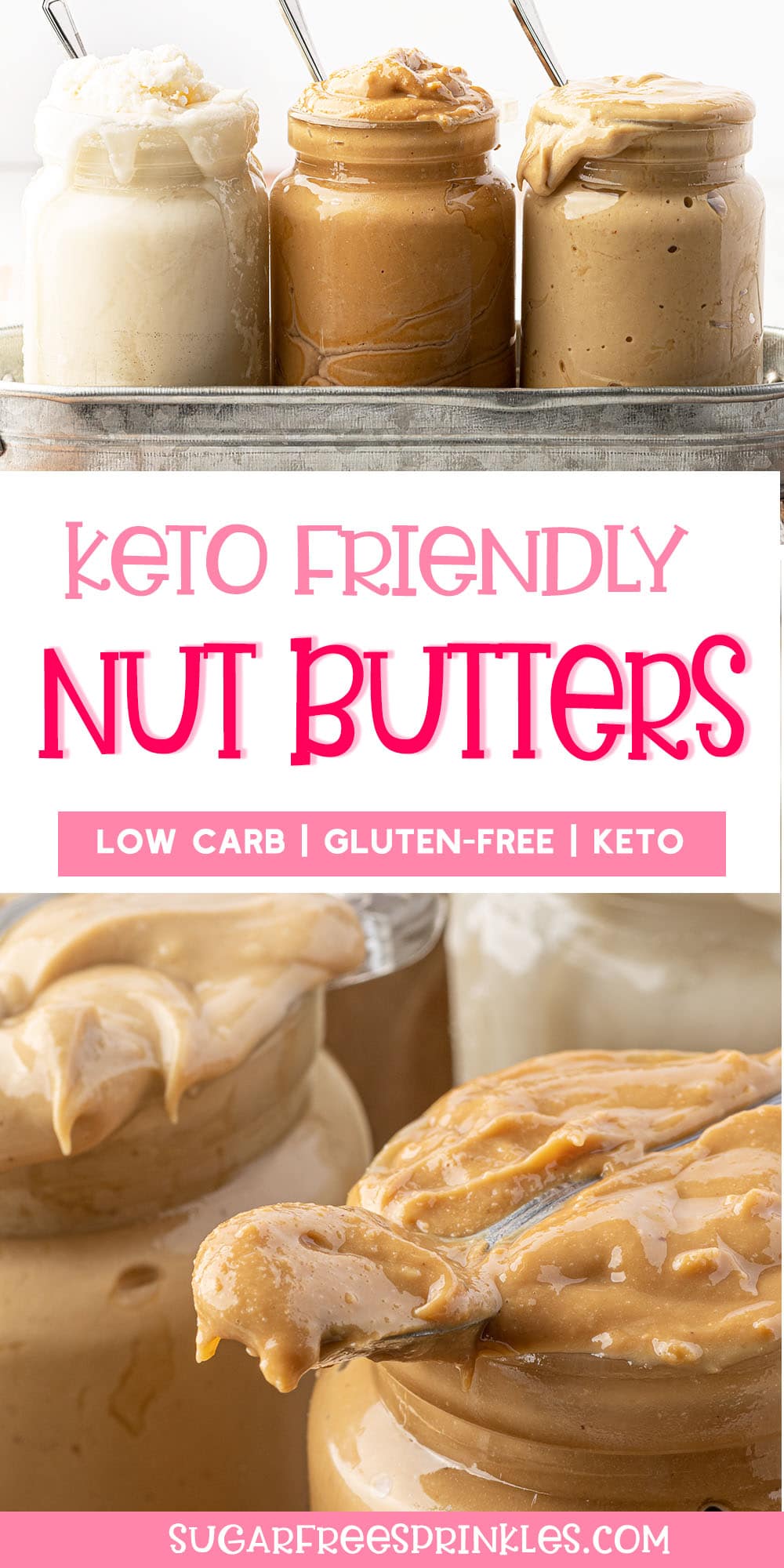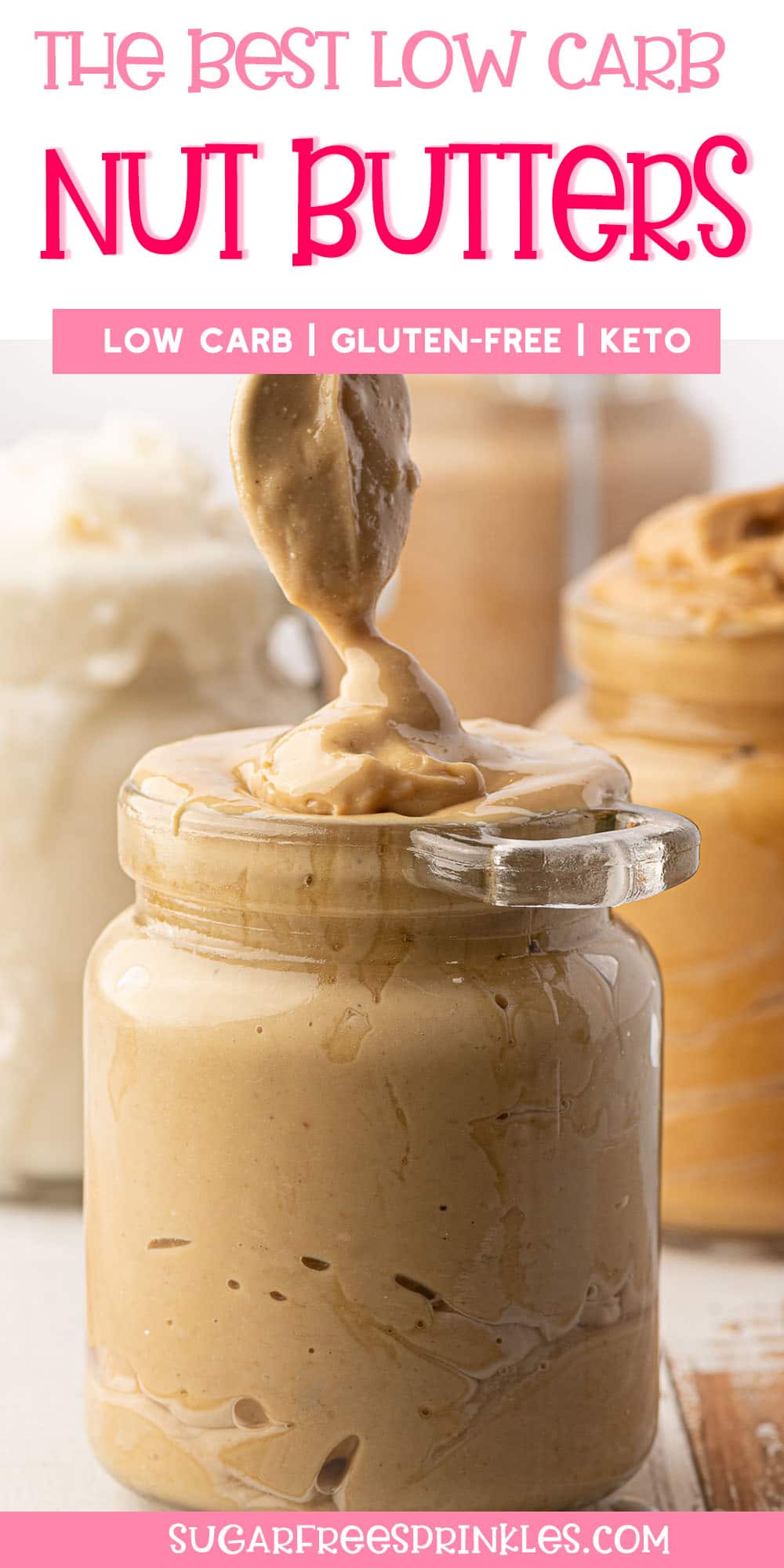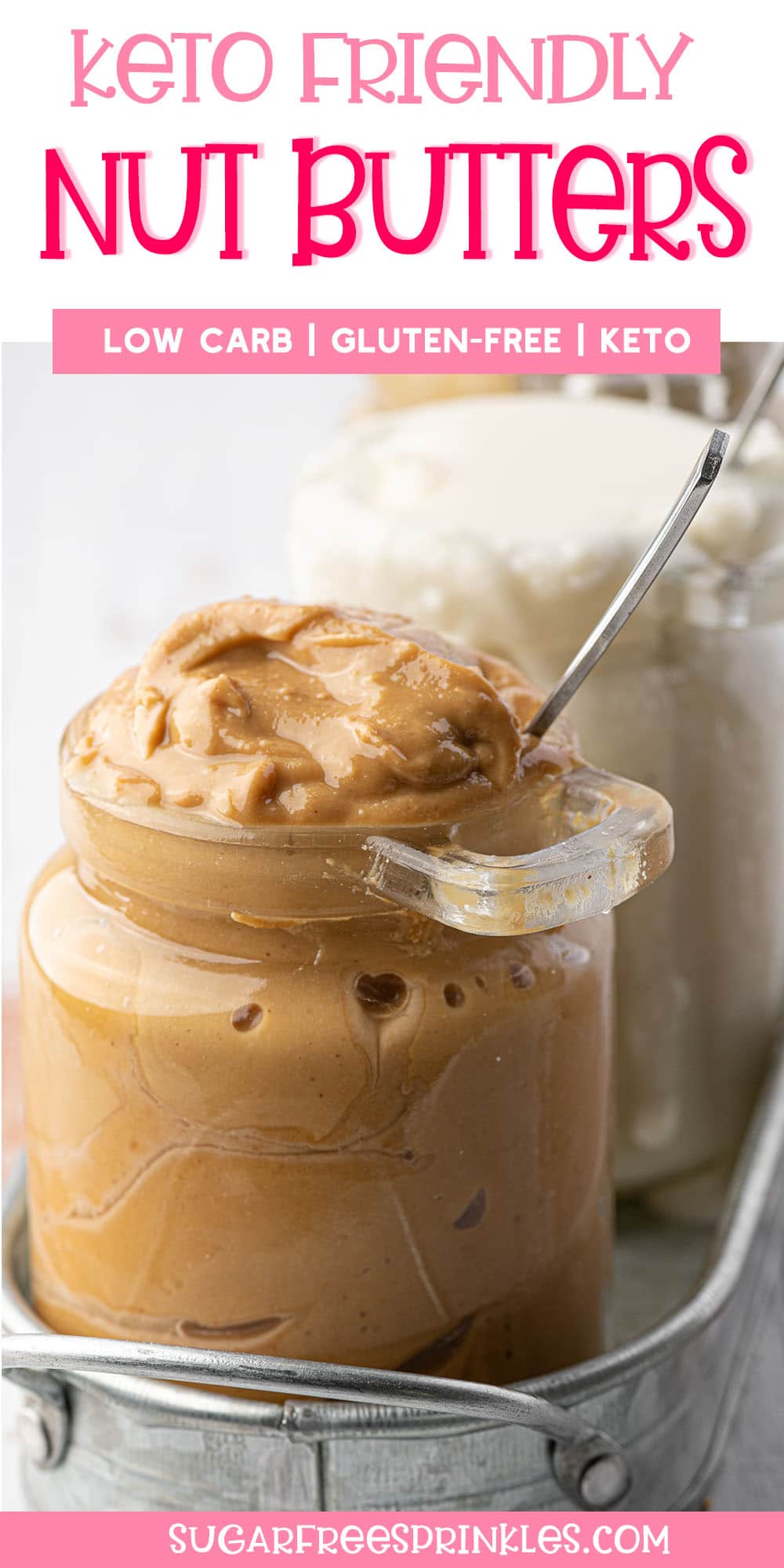Did you know there are tons of different nut butters nowadays? I’ve been experimenting with all different types and I can tell you now, they all react and bake differently. In today’s guide, I am going to share with you the best nut butters out there and how to them for low-carb baking!
What is your favorite nut butter? It seems like companies constantly create more and more different kinds of nut butter, and I’m not complaining! I love tasting and exploring all the different flavors.
If you are on a low-carb path with your food choices, then nut butters are a fantastic source of healthy fats and protein. People use them in baking, no-bake treats like ice cream, and even savory dinner recipes.
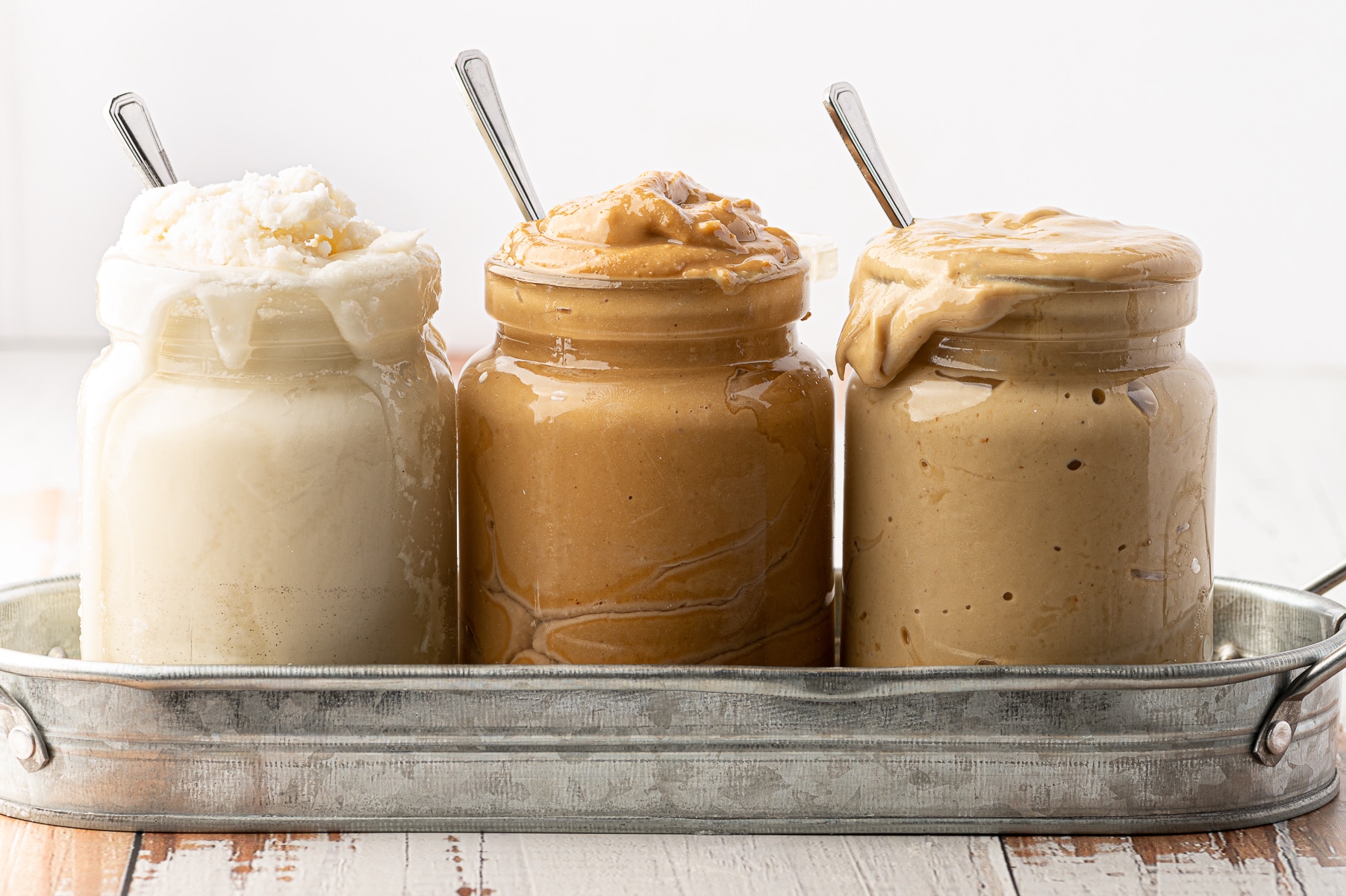
The Best Nut Butters For Low-Carb Baking
In this guide, I am going to highlight the best nut butters that you can use when you bake low-carb desserts. Each one has different amounts of fat, oils, and a different cost!
I’ll even explain which ones can be used as an equal 1:1 replacement for peanut butter.
Let’s look at each individual type of nut butter, starting with the most popular one, peanut butter.
1. Peanut Butter
The most popular type of nut butter by far is peanut butter. Unfortunately, it isn’t the best decision to always be eating in large amounts. It’s fine in moderation, but as you’ll see, you should limit how much peanut butter you eat.
Carb Count: There are 2 grams of carbs in each tablespoon of sugar-free peanut butter, which is why so many people love to use it.
Peanut Butter Nutrition
Peanut butter is an excellent source of non-meat protein and has tons of micronutrients that are good for your body too.
It has:
- Copper
- Folate
- Iron
- Vitamin B3
If you eat it in moderation, it can even aid in weight loss, which helps your heart health.
The only reason I suggest limiting how much you eat is that it does have a high amount of omega-6 fatty acids. These fatty acids actually contribute to inflammation in your body and prevent your body from using beneficial Omega-3s.
Note: This is only a problem if you eat large amounts of it each week.
You also want to make sure you are eating natural peanut butter that doesn’t have any harmful additives in it like hydrogenated oils.
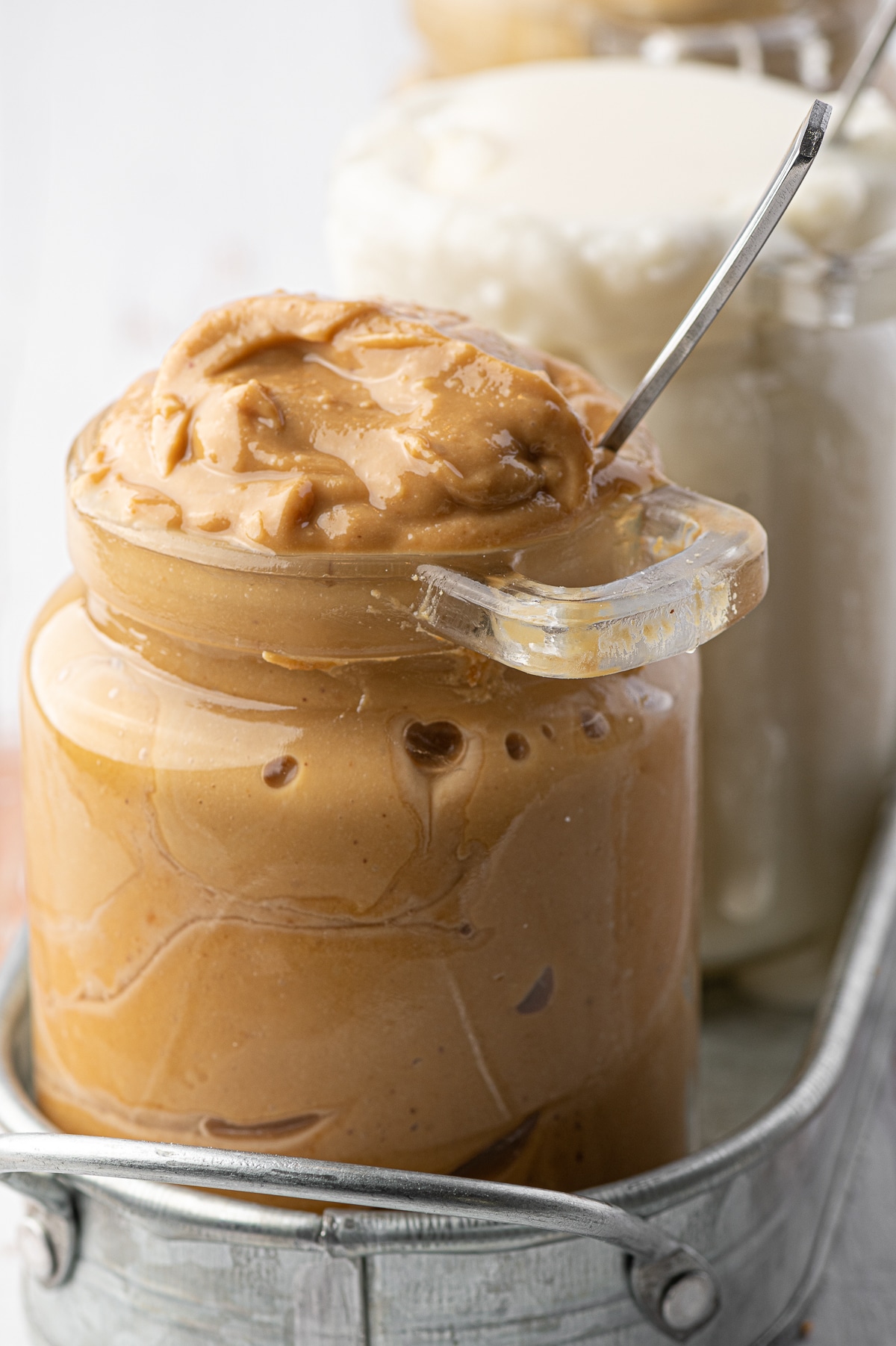
2. Almond Butter
The next most popular kind is almond butter! This is a fantastic choice for anyone that is allergic to peanuts. It has a really nutty flavor that fills you up fast.
Carb Count: There are 2.5 net grams of carbs per tablespoon of almond butter so it does have slightly more carbs than peanut butter.
Almond Butter Nutrition
Almond butter is much healthier for your heart than peanut butter.
It has less saturated fat, more monounsaturated fat, and it contains more fiber too. Almonds are also really high in calcium, which is beneficial for strong bones. The high amounts of magnesium in almond butter help regulate blood sugar and lower blood pressure.
When you bake with it, you can use the exact same amount of almond butter that you would use peanut butter, making it a perfect 1:1 ratio.

3. Coconut Butter
Don’t confuse this with that white coconut oil. Coconut butter is basically pureed coconut meat. Coconut oil is made by pressing coconuts until the oils are extracted. So coconut butter has fiber where coconut oil does not have as much.
Carb Count: There are 1.4 net grams of carbs in each tablespoon of coconut butter.
Coconut Butter Nutrition
All the nutritional benefits that you love about coconuts are in coconut butter too! That’s why I love this one so much.
Coconuts are a superfood! It has healthy fats along with fiber, potassium, magnesium, and iron.
It does have a strong coconut taste, so if that bothers you, then you might not want to use it as a 1:1 replacement for peanut butter. If you enjoy the taste, you can use it as much as you want.
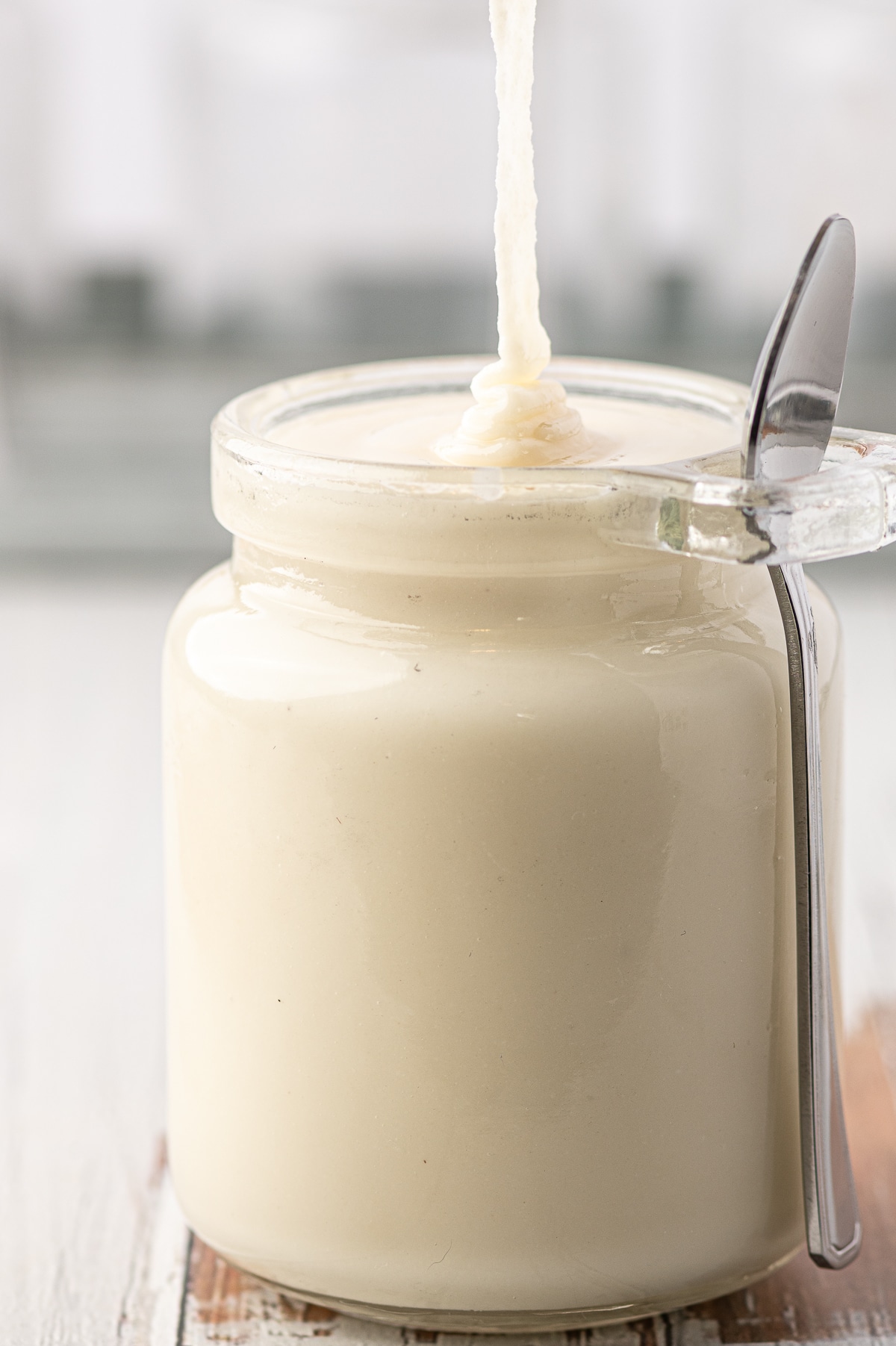
4. Cashew Butter
Cashews are popular because of their smooth texture and mild flavor. Cashew butter also has a naturally sweet flavor that works in lots of low-carb recipes.
Carb Count: There are about 1.8 grams of net carbs in each tablespoon of cashew butter.
Cashew Butter Nutrition
Unfortunately, cashew butter doesn’t have those Omega-3 fatty acids that coconut butter and almond butter has. However, it does have monounsaturated fats, essential amino acids, and protein.
This nut butter is good for cholesterol control, regulating your blood pressure, and even helps improve your metabolism.
As for whether it can be replaced 1:1 for peanut butter, it has such a mild flavor that it produces blander baked goods. Cooks.com did a fantastic comparison and said that you’ll have to add more vanilla and other ingredients to give the end result a tasty flavor.
But cashew butter is super smooth, incredibly creamy and absolutely heaven sent. Add in those extras and you have something truly incredible.
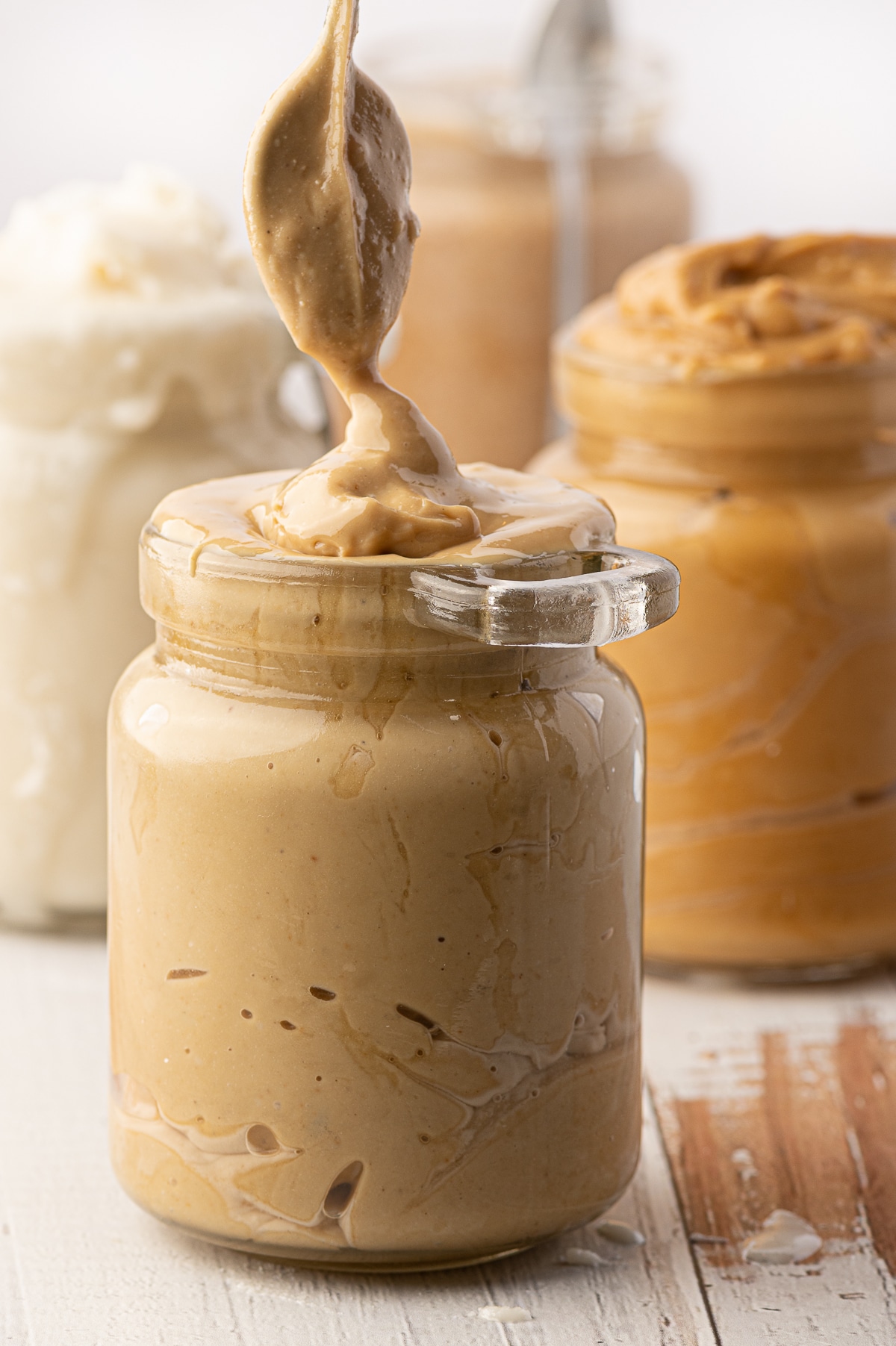
5. Macadamia Nut Butter
Macadamia nuts have an even milder flavor than cashews. I personally prefer to use them chopped up in my recipes, but there are lots of recipes for macadamia nut butter too.
Carb Count: There is only 1 gram net grams of carbs per tablespoon of macadamia nut butter.
Macadamia Nut Butter Nutrition
Just like the other nut butters on this list, macadamia nut butter is high in monounsaturated fats, which can help lower your LDL (bad) cholesterol levels. One thing they have in abundance in antioxidants, which can eliminate free radicals that cause common signs of aging and even contribute to cancer.
Since it has a creamy texture, it can be replaced 1:1 for peanut butter.
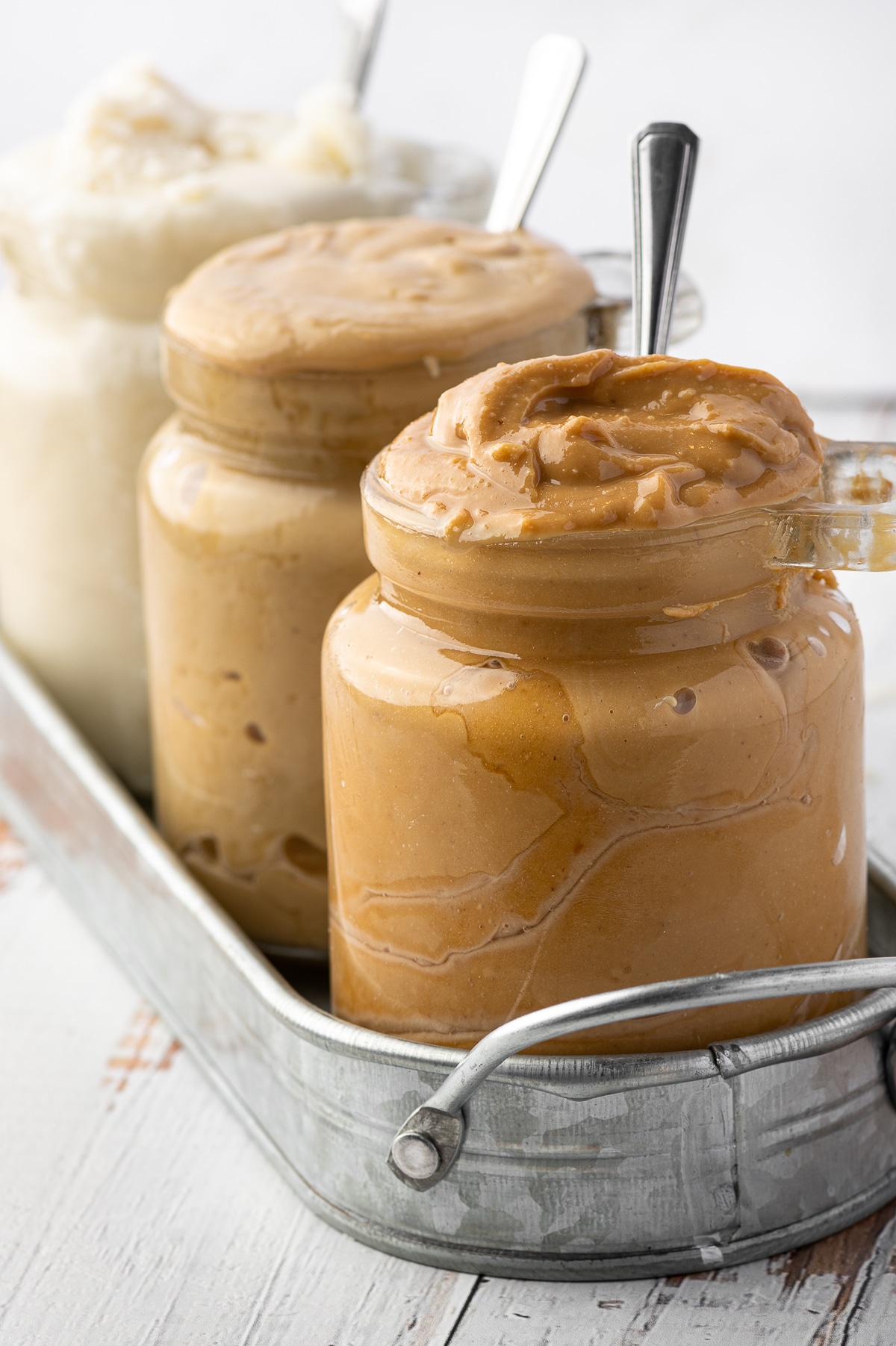
6. Pecan Butter
Pecan butter isn’t as popular a choice as the others in this list, but it’s still really good for you and has a unique flavor. It is high in iron, making it a smart choice for anyone that struggles with anemia.
Carb Count: There are 2.5 grams of carbs per tablespoon.
Pecan Butter Nutrition
Pecan butter boasts more than 19 vitamins and minerals – including vitamins A, B, and E. However, just like peanut butter, it does have omega 6 fatty acids. Eat this nut butter in moderation.
This can be replaced 1:1 for peanut butter. But, keep in mind, it does have a stronger flavor and a slightly different texture, so try a little bit before using it on the entire recipe.
I like to mix pecan into other butters to add a different flavour. A really good blend is pecan butter and coconut butter with a sprinkling of cinnamon and a dash of vanilla. It tastes like autumn on a spoon.
7. Hazelnut Butter
I don’t know about you, but when I think of hazelnuts, Nutella comes to mind! Nope, that’s not hazelnut butter, but I still enjoy the nutty taste of hazelnuts. If you do too, then you’ll love hazelnut butter.
Carb Count: There are 1.7 net grams of carbs per tablespoon of hazelnut butter.
Hazelnut Butter Nutrition
As you might expect, hazelnuts are packed with protein and tons of other nutrients too. What you might not know is that eating hazelnuts has been linked to lower rates of cancer. The amount of healthy fats in hazelnuts has also been linked to lower inflammation in the body.
Due to its creamy texture and mild flavor, hazelnut butter can be replaced 1:1 for peanut butter.
Benefits of Making Your Own Nut Butter
Surprisingly, nut butter is really easy to make right in your kitchen – and there are lots of reasons that you should just make your own.
The cost is the biggest reason of all. The only ingredients in homemade nut butters are nuts and oil and maybe salt. You can often buy nuts in bulk, making a bunch of nut butter for way less than the cost of jarred varieties.
When you make it yourself, you control what goes into it. You don’t have to be worried about the different weird ingredients that might be in it. Want it super sweet, add as much sweetener as you want. Want to add vanilla, emulsions, extracts chocolate? You can make your very own gourmet flavor blends.
I also like making my own because I can just make a small amount at a time. I don’t have to have a huge jar of it in my counter for months and months (and eventually throw out).
I love reducing food waste whenever I can!

How To Choose The Best Nut Butters
When you are trying to choose the best nut butters to use in baking, you have to look at tons of different factors, including price, nutrition, and how it tastes.
It’s so hard to choose just one. I love coconut butter, especially when it is flavored. But cashew butter is the tops when it comes to texture. And let’s get real for a second, peanut butter is popular for a reason, it’s tasty!
Nut Butters: My Favorite Recipes
These are some of my favorite nut butter baking recipes I’ve shared on the blog:
- Low Carb Peanut Butter Pie With Fudge Crust
- Sugar-Free Marshmellow Bars With Chocolate And Peanut Butter
- Low-Carb PB&J Muffins
- Creamy Peanut Butter Ice Cream Cake

